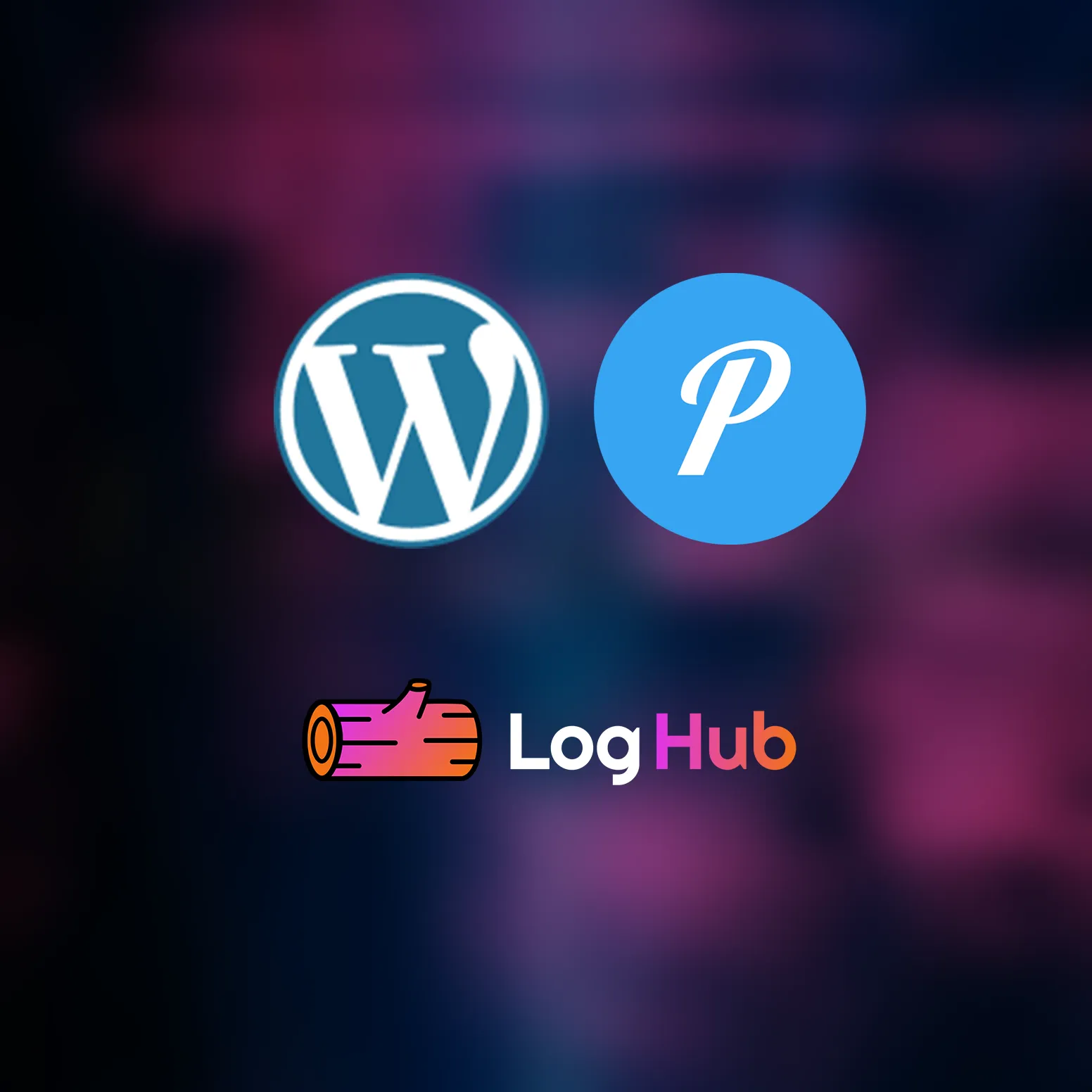Get WordPress Events via Push Notification with LogHub

Keeping track of critical events on your WordPress site—like logins, updates, or errors—can be a challenge. With LogHub, a cloud logging service, you can easily set up push notifications for WordPress events using Pushover, enabling instant alerts on your phone whenever important actions occur.
This guide shows you how to configure LogHub in your WordPress admin panel, define WordPress actions to monitor (without any coding required), set up triggers for key events, and receive real-time push notifications via Pushover.
Why Use Push Notifications for WordPress Events?
Push notifications let you monitor your WordPress site in real time, allowing you to:
- Stay updated on critical actions like login attempts, updates, and error messages.
- Instantly react to important issues or security threats.
- Simplify your site management by letting LogHub handle event tracking and notifications.
With LogHub and Pushover, you can be notified the moment a specified action occurs on your WordPress site, keeping you proactive and informed.
Step 1: Set Up LogHub for WordPress
First, create an account on LogHub if you haven’t already, and follow these steps to integrate it with your WordPress site.
- Create a New Project in LogHub: Log in to LogHub and create a new project specifically for your WordPress site. This project will store all logs and events for easy access and tracking.
- Download and Install the LogHub WordPress Plugin: In your LogHub dashboard, go to the “Getting Started” section and download the WordPress plugin for LogHub. Install it on your WordPress site by uploading the .zip file via Plugins > Add New in your admin panel.
- Activate the Plugin: After installing, activate the plugin to start capturing and logging events from your WordPress site.
- Configure API Key: To securely connect your site with LogHub, navigate to Settings > LogHub in your WordPress admin menu. Enter your LogHub API key in the appropriate field. You can find this API key in your LogHub project’s settings.
Step 2: Define WordPress Actions to Track (No Coding Required)
Once the LogHub plugin is installed, you can define WordPress actions to track directly from the Settings > LogHub menu in your WordPress dashboard. This requires no coding—simply select the actions you want LogHub to monitor, such as:
- User Logins: Monitor all login attempts for security purposes.
- Plugin/Theme Updates: Track updates as they happen.
- Error Messages: Capture WordPress errors to help identify and fix issues quickly.
- Form Submissions: Log submissions from contact forms or other user inputs.
Each action will automatically be sent to your LogHub project, categorized based on the selected log types, such as INFO, WARNING, or ERROR.
Step 3: Set Up Triggers in LogHub
With actions defined, you’re ready to set up triggers in LogHub to receive notifications for important events.
- Go to the Triggers Section in LogHub: Within your LogHub project, navigate to the Triggers section, where you can specify which events should send notifications.
- Define Trigger Conditions: Set up specific conditions for each trigger, like:
- Notifying on user login attempts, set as a SUCCESS or WARNING.
- Triggering an alert for any ERROR or critical issue that occurs.
- Add Action – Pushover Notification: After defining each trigger, select Pushover as the action type. LogHub integrates with Pushover to send push notifications to your device whenever a specified event takes place.
- Set Up Pushover: If you don’t already have a Pushover account, sign up on Pushover. Install the Pushover app on your mobile device, generate a user key, and add this key in the LogHub trigger settings.
Step 4: Receive Real-Time Push Notifications
Once your triggers are configured, LogHub will automatically send real-time push notifications via Pushover to your phone when any tracked WordPress action occurs. Each notification includes:
- Log Details: Information on the event type, function, and message content.
- Action Context: Key details that help you assess the event’s importance and take immediate action if necessary.
Example Use Cases for WordPress Event Notifications
Push notifications with LogHub can support various critical use cases, such as:
- Security Alerts: Receive instant notifications of failed login attempts to detect potential security risks.
- System Monitoring: Keep track of plugin or theme updates to ensure your site is always up-to-date.
- Error Monitoring: Get immediate alerts for PHP errors or WordPress warnings, allowing you to address issues before they impact your users.
Conclusion
Using LogHub to monitor WordPress events with push notifications helps you stay in control of your website’s security and performance. With a few simple steps, you can set up LogHub in your WordPress admin, define key actions, and integrate with Pushover to get real-time alerts for essential events.
Get started with LogHub today and manage your WordPress site with ease and confidence!